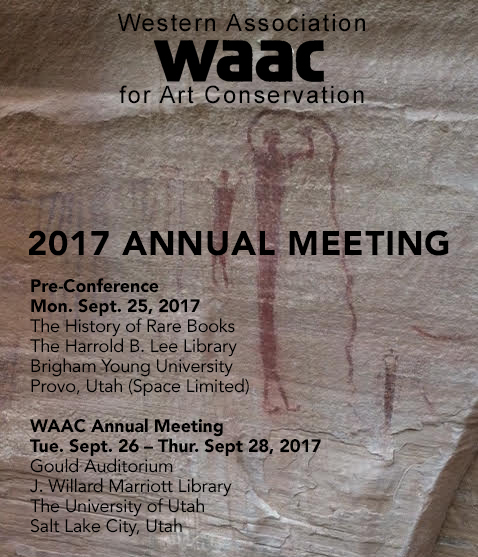Putting the Wiki Platform to Work: Sharing Material Testing Results
Abstract
Andrew W. Oddy first introduced an accelerated corrosion test used for evaluating exhibition case materials at the British Museum in 1973. The “Oddy Test,” as it has come to be known, continues to be used by museums as the primary litmus test for materials used in the display of artwork and cultural heritage materials. Several variations and improvements have been published since and almost every institution has their preferred method based on the equipment available to them. Although conservators continue to use the test and informally share results, there has been historical resistance to publicizing them. One of the primary issues with publishing results is fear of manufacturer backlash or alternatively being held responsible for damage caused through use of an “approved” material. In addition, variations in Oddy testing protocol prevent the standardization of results. Finally, the accelerated corrosion test is only one of various methods of evaluation and results may be quickly voided by unannounced product manufacturing changes.It seems particularly pertinent approaching the forty-fifth anniversary of Andrew Oddy’s initial publication that we address the topic of materials testing and sharing results, especially in light of the fact that the British Museum has published their results dating from 2009-2014 on their website. In 2012 conservators created a platform for others to do the same on the American Institute for Conservation (AIC) Wiki site. It was established with the hope that colleagues would feel more comfortable sharing information on a collaborative platform, giving them safety in numbers. By establishing best practices for sharing results on the AIC Wiki, such as describing the testing protocol and imaging test coupons, the databases allow conservators to evaluate others’ results for themselves. This initiative began at the request of AIC’s Research & Technical Studies (RATS) Specialty Group, and in 2011 the J. Paul Getty Museum (JPGM) contributed the initial content to the newly established Materials Testing page. This included a general explanation of Oddy testing, a description of their testing protocol, and a list of adhesives and tapes tested by the Getty Conservation Institute in 2000. Around 2011, the Cleveland Museum of Art’s renovation campaign prompted the authors, who were asked to test materials to build an internal reference library, to perform a review of their own Oddy testing protocols. The review included comparing protocols at other institutions, including information available on the AIC Wiki. In January of 2012, after a call for Wiki contributions from AIC e-Editor Rachael Perkins Arenstein, the authors, along with objects conservator Elizabeth Homberger (now at LACMA), volunteered to create a materials database on the Wiki. The project expanded the Oddy testing page, creating a searchable and sortable table of tested materials. In addition, any contributor who shared their protocol could easily add their results to the table. By publishing the results on a neutral site, such as the AIC Wiki, it is the authors’ hope that other institutions will see the benefit of such a resource and begin to participate in greater numbers. Most recently, the National Archives of Australia with PAT results and Autry National Center with a testing protocol joined the group of those sharing information.
The existing content consists of a Protocols page and four Materials Database pages divided into the following categories: Fabrics, Case Construction Materials (including storage and mount materials), Adhesives and Tapes, and Paints and Sealants. Links to manufacturer and supplier sites, related external sites, other published results, and pertinent literature are also provided. Each page contains the important caveat that this information is a reference tool rather than endorsement. The database pages can easily be expanded or adapted based on contributor or user feedback. Recent feedback was solicited from the online mountmakers’ forum and then incorporated into the site. Current goals of the project include increasing the number of contributors, automating data entry, and integrating feedback from users. The ultimate goal is to create a resource that will aid staff at institutions of every size and type in choosing materials appropriate for their needs and collections.
Click on Video link on the right to view presentation.
Published
2017-11-28
How to Cite
SPRINGER, Samantha.
Putting the Wiki Platform to Work: Sharing Material Testing Results.
Selected Proceedings of Advances in Conservation, [S.l.], nov. 2017.
Available at: <https://epubs.utah.edu/index.php/waac/article/view/4021>. Date accessed: 25 dec. 2025.
Issue
Section
Articles


